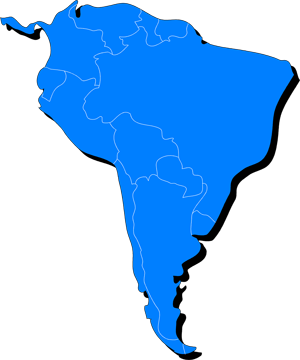Gondwanax paraisensis
Every month, 100,000 readers use the Dinosaur Database, but we receive no support from you. Developing and updating the database requires a lot of work. If you want it to remain open and be updated, please support us via the "Buy us a coffee" button available on every page or via the Support page.
Dinosaur: Gondwanax paraisensis
| Length*: | 1.4 m | 4.6 ft |
| Weight*: | 4.6 kg | 10 lb |
*The largest known specimen
Period
Epoch: Late Triassic
Stage: Ladinian-Early Carnian
Years: 237-228 Ma
Details
Status: valid
Author: Rodrigo Temp Müller
Year: 2024
Distribution
Area: South America
Country: Brazil
Region: Rio Grande do Sul
Formation: Santa Maria
Classification
Description
Gondwanax paraisensis
Gondwanax paraisensis: The Early Silesaurid of Gondwana
Gondwanax paraisensis is a newly described “silesaurid” dinosauromorph from the Ladinian-Carnian boundary of the Middle-Late Triassic period (about 242–227 million years ago). Found in the Paraíso do Sul region of Brazil, it represents one of the earliest members of the “silesaurid” clade and sheds light on the early evolution of bird-line archosaurs. This species was recovered from the Dinodontosaurus Assemblage Zone in the Santa Maria Supersequence, a region noted for its diverse Triassic fauna.
Physical Characteristics
The known material of Gondwanax paraisensis includes a nearly complete right femur (holotype) and associated vertebrae. The femur is robust, indicating it was a relatively sturdy and agile animal. It displays an incipient fourth trochanter, a unique feature for a silesaurid, suggesting some specialization in locomotion. The preserved vertebrae—cervical, dorsal, sacral, and caudal—show advanced morphological traits, including a partially fused sacrum with three sacral vertebrae, a feature more commonly seen in derived archosaurs.
The structure of the ilium also shows distinct characteristics, such as a pronounced medial wall and a well-developed antitrochanter. These features highlight the increasing complexity of pelvic anatomy among early dinosauromorphs and suggest that Gondwanax had an efficient, upright posture, similar to more derived dinosaurs.
Diet and Feeding Habits
Although direct evidence of diet is lacking, Gondwanax was likely an herbivore, as inferred from its anatomy and phylogenetic relationships with other “silesaurids.” Like other early dinosauromorphs, it likely fed on low-growing plants, including ferns, cycads, and other Triassic vegetation. The robust build of the femur suggests a relatively active lifestyle, likely supporting foraging over large areas in search of food.
Habitat and Distribution
The fossils of Gondwanax were discovered at the Linha Várzea 2 site (29°43′03″S, 53°09′07″W) in the municipality of Paraíso do Sul, Rio Grande do Sul, Brazil. This region, during the Triassic period, was part of the supercontinent Gondwana and was characterized by semi-arid conditions with seasonal rainfall. The habitat likely consisted of riverine forests and open plains, home to various reptiles, early archosaurs, and other Triassic fauna.
Behavior and Social Structure
As a basal dinosauromorph, Gondwanax likely exhibited behaviors typical of early herbivorous archosaurs. It may have lived in small groups or as solitary individuals. Trackways and fossil evidence from related species suggest that small to medium-sized archosaurs of this time period were capable of both bipedal and quadrupedal locomotion, allowing them to exploit different ecological niches.
Discovery and Research
Gondwanax paraisensis was first described in 2024, following its discovery in the Triassic beds of the Santa Maria Supersequence. The holotype, CAPPA/UFSM 0417, consists of a right femur, and the referred material includes vertebrae and other skeletal elements. The species name honors the Paraíso do Sul region where the fossils were found, while the genus name references the supercontinent Gondwana and the dominance of this clade in the early Mesozoic era.
Significance and Interesting Facts
The discovery of Gondwanax provides crucial insights into the diversity and early radiation of “silesaurids” during the Middle to Late Triassic. It demonstrates that these early archosaurs were more ecologically diverse than previously thought, occupying a range of niches and exhibiting various locomotor strategies. The presence of this species in the Dinodontosaurus Assemblage Zone adds to the growing evidence of the rich vertebrate diversity of the region during the Triassic.
Locations
Sources
Material: Right femur, referred vertebrae, ilium, ischia
References: R. Temp Müller, A new “silesaurid” from the oldest dinosauromorph-bearing beds of South America provides insights into the early evolution of bird-line archosaurs, Gondwana Research (2024)



